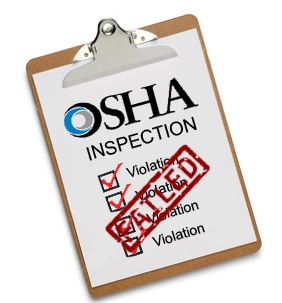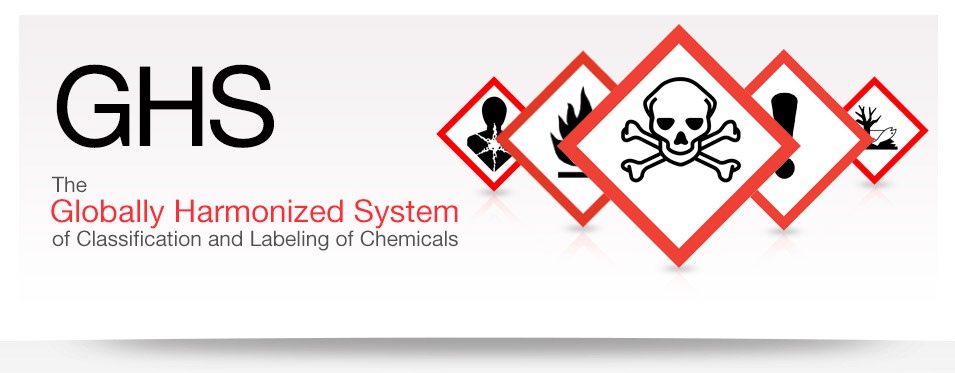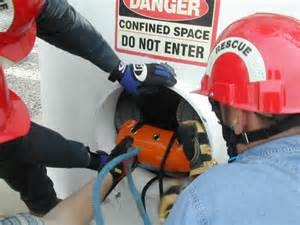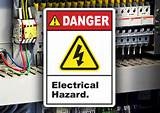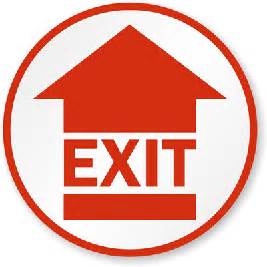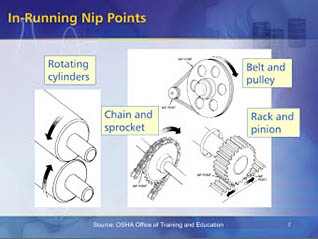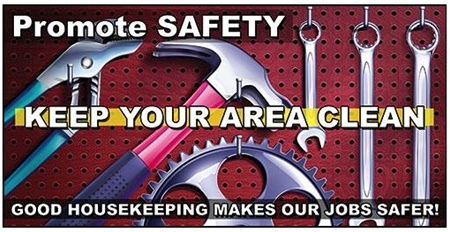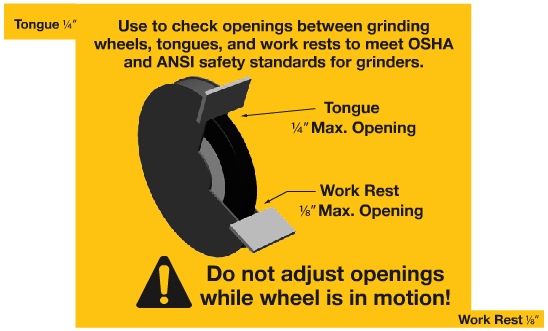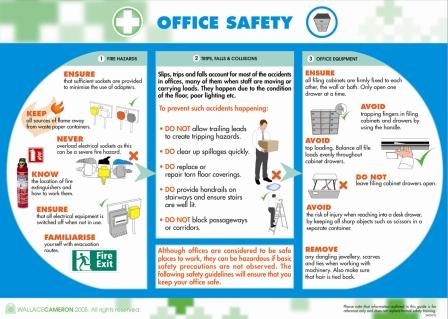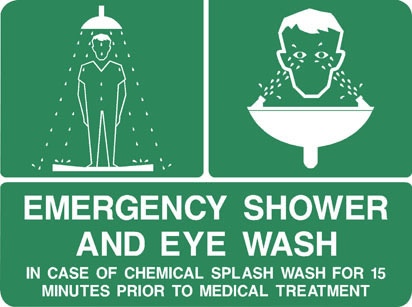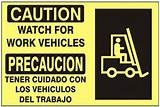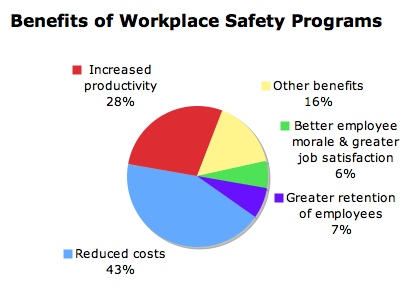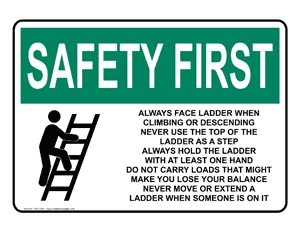Information
-
EHS Audit
-
Document No.
-
Audit Title
General & Mgr Support
-
Audit completed on:
-
Auditor
-
Auditors Comments
-
Auditors summary
1.0 Previous Inspection
-
Was there a previous Audit completed at this location?
-
Items from previous audit have been corrected
-
Great job. This shows that safety is a priority.
-
Items from previous audit were observed and have NOT been fully corrected
-
ATTENTION: Items observed on this audit were repeat observances or uncorrected issues. It is imperative that all items be corrected to insure the safety of your staff and reduce risk of accidents or violation.
Chemical Safety
Chemical - RTK and GHS compliance - MSDS 1910.1200
-
Chemical Hazards Were Observed by the Auditor (You Must Correct Severe Issues immediately)
-
Are secondary bottles labeled to meet HMIS or GHS compliance? Do they contain HMIS information or pictograms to indicate hazards along with first aid and specific hazard warning instructions.
-
Is there an updated chemical inventory available with maximum quantity on hand and location?
-
Is there an SDS binder available where chemicals are used and has it been updated in the last 12 months?
-
Is the online safety data sheet access information posted and available?
Chemical Handling and Storage 1910.120
-
Chemical hazards observed
-
Are open drums and containers stored on spill containment pallets or pans?
-
Are quantities of more than a quart of flammable liquid stored in an approved flammable cabinet?
-
Are metal flammable storage drums grounded properly to prevent sparks and fire?
-
Are approved secondary containers utilized, are they labeled properly and are they compatible with its contents?
-
Are any chemicals stored or being handled in an unsafe manner?
Compressed Gasses 1910 Subpart M
-
Do you have compressed gas cylinders stored or used onsite?
-
Are compressed gas cylinders capped with a metal protective cover when not in use?
-
Do empty cylinders have their valves closed? 1910.253(b)(2)(iii)
-
Are compressed gas cylinders stored to prevent tipping or falling?
-
Are oxygen and fuel gas compressed cylinders separated by at least 20 feet?
Confined Space
Confined Space 1910.146
-
Do you have confined spaces that have potentially hazardous conditions? Confined Space (Has limited or restricted means of entry or exit (Tanks, vessels, silos, storage bins, hoppers, vaults, pits, and space with limited means of entry)
-
Are all confined spaces properly identified?
-
Are only trained personnel permitted to enter confined spaces? Do they have the appropriate equipment to enter the space safely?
-
Do you have permit required or non permit required confined space posted properly?
-
Safe Entry procedures are established for permit required or non permit required confined space for employees and contractors?
-
Emergency and protective equipment and materials provided and available?
Electrical Safety
Electrical Safety 1910 Subpart S
-
Electrical hazards observed
-
Do electrical panels and disconnects have 36" radial clearance for emergency access?
-
Are there any electrical cords that are supplying equipment not considered temporary that should be hard wired?
-
Were there excessive extension cords, surge protectors or overloaded circuits observed?
-
Are electrical panels, disconnects and breakers labeled as to what they control?
-
Observed electrical panels and disconnects or junction boxes with open slots, uncapped conduit holes, discontinued circuits or uncovered wiring.
-
Are electrical panels and disconnects labeled with amperage and voltage?
-
Are the facilities maintenance employees trained and using safe Arc Flash 70E and electrical safety procedures when working on HOT circuits?
Emergency & Fire
Emergency Equipment 1910.120
-
Emergency equipment issues
-
Spill kits available where required, inspected and adequate for amount and type of chemicals on site?
-
Are eyewash stations, showers and fire blankets available, inspected and working properly?
-
Are first aid kits available, applicable for the facility, stocked and readily available?
Emergency Preparedness 1910.38 & 1910.39
-
Emergency preparedness issues observed
-
Is there a site specific emergency action plan with the minimums set by 1910.38(c)?
-
Emergency plan displayed and understood by all employees?
-
Evacuation plan and maps displayed and understood by all employees?
-
Do employees know where to go (a safe zone) and do you have roll call procedures in place?
-
Are emergency numbers posted and up to date in a conspicuous location?
-
Is there a written site specific fire prevention plan with the minimums of 1910.39(c)? (Can be included in emergency action plan)
Fire Prevention 29 CFR 1910 Subpart L
-
Fire prevention hazards observed
-
Oily rags and combustible refuse stored in covered metal containers?
-
Fire alarm system functioning correctly?
-
Are Fire Extinguishers inspected monthly, documented and clear of obstructions?
-
Are employees trained on proper use of fire extinguishers?
-
Is paper, trash and flammable material stored away from potential fire or combustion hazards?
-
Are fire extinguishers located on the site/emergency map?
Exits
Exits 1910 Subpart E
-
Means of egress deficiencies observed
-
Exits clear of obstructions?
-
Are doors on cold-storage rooms provided with inside release mechanisms that release the latches and open the doors?
-
Where exit doors open directly onto a street, alley, or other area where vehicles may be operated, are adequate barriers and warnings provided to prevent employees from stepping directly into traffic?
-
Emergency exit lighting and illuminated exits in place and operable?
-
Where exits are not visible are directional signs provided?
-
Are exit doors able to open from the direction of exit travel without the use of a key or special knowledge or effort?
Guarding & LOTO
Machine Guarding 1910 Subpart O
-
Machine Guarding Hazards Observed
-
Guards firmly secured and not easily removable?
-
Observed removed or damaged machine guards. SERIOUS HAZARD
-
Guards prevent workers from reaching under, around or behind guarded area?
-
Foot trundle or foot pedal safety guards are in place?
-
Point-of-operation guards provided and in place?
-
Observed bypassed safety switches or interlocks. SERIOUS HAZARD<br>
-
Pinch points and inward running rollers are properly guarded?
-
Belts, chains, gears, sprockets, pulleys and flywheels guarded?
-
Machine controls within easy reach of the operator?
-
Guards provided for any other hazardous moving part of the machine?
Lockout Tagout (Control of Hazardous Energy) 29CFR 1910.147
-
Control of hazardous energy (LOTO) issues observed
-
Have written Lockout/Tagout procedures been developed for all hazardous equipment?
-
Have the required periodic audits of energy control procedures been performed and documented? 1910.147(c)(6)(ii)
-
Is Lockout/Tagout equipment available? Are all lockouts documented?
-
Have employees performing lockout tagout been effectively trained?
Housekeeping & Inspections
Housekeeping 1910.22
-
Housekeeping hazards observed
-
Entry and walkways kept clear of materials and blockage?
-
Walkways adequately and clearly marked?
-
Floor surfaces even and uncluttered?
-
Are footpaths in good condition?
-
Are railings in good condition?
-
Are fall preventive measures in place and used where gaps occur in railings?
-
Stairs and risers kept clear?
-
Are liquid spills removed quickly?
-
Intersections kept clear of boxes, pallets, etc?
Inspections and Procedures 5(a)(1) (GDC)
-
Control of hazardous energy (LOTO) or Inspection issues observed
-
Are weekly hazardous waste inspections performed if applicable?
-
Are you conducting monthly period safety inspections to document a safe work environment?
-
Do you inspect eyewash stations, emergency lighting, fire extinguishers and any other emergency equipment regularly?
Machine Shop
Machine Shop and Maintenance Areas 1910.215, Subpart P,Q,O
-
Machine shop was inspected
-
When welding is the proper ventilation in place, is there a shield to protect other workers and are employees trained on safe welding and hot work procedures?
-
Are maintenance records kept to show PM or other regular maintenance on equipment and to verify equipment in facility is kept in safe working condition?
-
Bench Grinders - Shields in place, tool rest adjusted within 1/16", grinder securely mounted, no non-ferrous material in wheel? 1910.215(b)(1)(iii)
-
Drill press guarded?
-
Table Saws - Are table saw and portable saw blades properly guarded to prevent injury?
-
Are hand tools in safe working order? Are electrical cords in good condition?
-
Is weight limit posted on jack stands and other lifts?
Training & PPE
Personal Protective Equipment - PPE 1910 Subpart I
-
PPE hazards
-
Personal protective equipment is well stocked and available for the hazards present at this facility?
-
Fall protection PPE is available where applicable and areas where required are posted to restrict access to trained personnel only?
-
Are respirators or dust masks being utilized properly where applicable?
-
Do you have a written Respiratory Program if respirator use is required? Are all employees using respirators trained?
-
Have all workers using PPE been trained on the proper use, fit and limitations of the PPE?
-
Are engineering controls in place to protect workers before PPE is utilized?
-
Is proper footwear being used?
Employee Training 29CFR part 128
-
Employee training issues observed
-
Facility conducts comprehensive employee hazard training and ensures all participate; in addition, employees can demonstrate proficiency in, and support of areas covered by training?
-
Facility ensures workers receive documented safety training for the equipment they will be operating. <br>Workers are informed of the hazards of the equipment, PPE required, engineering controls and safe operating procedures utilizing operators manuals or safe work procedures.
-
Basic First Aid training
-
Blood Borne Pathogens - Does the employer have documentation of training, including the contents of the training sessions, names and qualifications of trainers, names and job titles of those trained? (Note: Documentation must be kept for three years.) 1910.1030(h)(2)(ii)
-
Confined Space - Does the employer have documentation of each employee’s name, the signatures or initials of trainers and the dates of the train- ing? 1910.146(g)(4)
-
Hazard Communication GHS - Does the employer maintain documentation of the employee name and contents of haz- ardous communication training? 1910.1200(h)(3)
-
HAZWOPER Level 1-5 training
-
Lockout Tagout - Does the employer have certification that training has been accomplished and kept up to date including each employees name and training dates? 1910. 147(c)(7)(iv)
-
New Employee Training: are all employees being trained properly before beginning work for specific hazards associated with their task and general hazards in the facility. Additionally are they trained where emergency equipment and supplies are located and what to do in an emergency or spill of a chemical?
-
Personal Protective Equipment - Does the employer have certification with employee’s name, date and subject for personal protective equipment training? 1910.132(f)(4)
-
Eye safety for hazards present
-
Emergency Preparedness
-
Respirator training, fit testing and medical evaluations are completed when required?
-
Slips Trips and Falls training
-
Safe lift or Industrial Ergonomics
-
Are the weekly toolbox meeting notes available?
-
Other site specific training deficiencies noted where applicable?
-
Are there records on site for DOT training?
Office
Office Areas
-
Office areas were inspected and hazards were found.
-
Exit paths are free of boxes/materials at all times?
-
Aisles, walkways, and work areas are free of trip and fall hazards (i.e. torn carpets, turned up edges of door mats, boxes etc.)
-
Illuminated exit and emergency lighting working properly?
-
First aid kits and fire extinguishers available and inspected regularly?
-
36” clearance is maintained in front of all electrical panels and fire extinguishers?
-
Electrical cords and plugs are in good condition: not frayed, taped, spliced, covered with carpet or the ground prong missing?
-
Work and storage areas are free of improper storage (e.g., heavy, high and/or unstable storage)
-
Shelf and wall units over 6' or by exit aisles are secured to prevent tip over?
-
Computer work stations and work areas are ergonomically correct and workers are working safely?
-
The use of space heaters is kept to a minimum and the area around them kept clear of combustible materials?
Postings and Signage
Postings/Signage
Strata Policy Statements
-
Equal opportunity employer
-
Equal opportunity for qualified individuals with disabilities and qualified veterans
-
Equal employment opportunity officers
-
RE: Designation of EEO officers
-
Disadvantaged business enterprise officers
-
Small business subcontracting policy
-
2.0 -2.8 equal employment opportunity and discrimination policies
-
Federal required posting
-
Is the OSHA "Job Safety and Health" poster on display?
-
Is there anyone on staff that needs an alternate language poster?
-
E-Verify poster
-
Know Your Rights Under the Recovery Act poster
-
Recovery Act Fraud poster
-
U.S. Dept of Transportation NOTICE
-
Is the OSHA 300 log posted?
-
Right to work flag background poster
-
Davis-Bacon Act Employee Rights poster
-
Your Rights Under the USERRA Act
-
Employee rights and responsibilities under the family and medical leave act
-
Employee rights for workers with disabilities paid at special minimum wages
-
Employee rights under the fair labor standards act
-
Emergency phone numbers
-
North Dakota
-
North Dakota Minimum Wage and Work Conditions Summary Poster on display?
-
Job Service North Dakota Unemployment Insurance poster on display?
-
WSI Certificate of Premium Payment or WSI Important Notice to Employees poster on display?
-
Fair Labor Standards Act (FLSA) Minimum Wage poster on display?
-
Employee Polygraph Protection Act poster on display?
-
Employee Rights Under the NLRA poster on display?
-
The Uniformed Services Employment and Reemployment Rights Act poster on display?
-
Equal Employment Opportunity is the Law poster on display?
-
Employee Rights and Responsibilities Under the Family and Medical Leave Act poster on display?
-
Minnesota
-
Contractor non-discrimination is the law
-
MN Dept of Human Rights Certificate of Compliance
-
Age discrimination poster on display?
-
Employees are entitled to... Poster on display?
-
Safety and health on the job poster on display?
-
Unemployed? Poster on display?
-
Worker's comp poster on display?
-
MN DOT Notice to Workers
-
Notice of no discrimination in employment
Warning Signs and Labels 1915.16
-
Warning signs, labels and postings
-
Warning signs, stickers or labels were placed in areas or on equipment to notify or warn employees of specific hazards.
-
Are areas where PPE is critical and hazards are prevalent posted to remind workers to wear their assigned PPE?
-
Signage for pits, sites, etc?
-
Adequate road signage?
Warehouse & Forklifts
Dock and Warehouse Safety
-
Dock and warehouse hazards observed
-
Loading area is clean and uncluttered to prevent falling objects, slips, trips or fall hazards?
-
Are heavy or bulky objects stored on lower shelves?
-
Pallets must be in good condition. Empty pallets must be stored flat or in a contained area to prevent injury. No broken or protruding wood or nails. No pallets on edge. Avoid storing empty pallets in quantities or densities in excess of O.H. fire sprinkler combustible load ratings.
-
Are rack uprights and beams in good condition? Bent racks and beams must be repaired or replaced.
-
All rack uprights over 6' should be bolted down to prevent tipping or falling?
-
Guardrails and/or covers are provided to protect personnel from the hazards of open sides of stairs, platforms, floor openings, floor holes, mezzanines, equipment pits, and other possible fall hazards.
-
Aisles and forklift zones are indicated to protect pedestrians?
-
Fall hazards are protected with restraint and signage?
-
Wheel chock required and utilized when loading or unloading trailers with forklifts?
-
Are open docks with a fall hazard that exceeds 36" protected with a restraint and warning signage?
Forklifts and Pallet Jacks 1910.178
-
Forklift hazards observed
-
Do forklift and lift operators have current training certifications and are they operating the trucks safely?
-
Have electric pallet jack operators been trained and certified on their use?
-
Forklifts - Are daily or pre-shift industrial truck inspections being done and documented? 1910.178(g)(7)
-
Are forklifts in safe working condition? Tires good, horn works, backup alarm operational, no cracks in hoses, chains even and greased, etc.
-
Are current forklift safety rules posted in areas where forklifts are used?
Written plans/procedures
Written Plans and Procedures. Title 8 3203 and OSH act
-
Written plans and procedures were checked.
-
Is your company's General Safety or IIPP written program up to date and being applied? Has it been reviewed and signed by an officer of the company in the last year?
-
Do you have required written plans such as a respiratory protection program , a chemical hygiene plan, a lockout tagout program or noise exposure program in place and being applied per the plan?
-
Do you have a written emergency preparedness program or fire safety program and is it complied with?
-
Do you have documented employee accountability program in place with progressive discipline for safety violations?
-
Do you have a Heat Illness Prevention Program that applies to all employees that may be at risk of heat illness and applies to all indoor and outdoor places of employment where environmental risk factors for heat illness are present.
-
Do you have a comprehensive HMBEP with chemical Qty on hand, hazard ratings, control and mitigation procedures.
-
Fire prevention plan
-
NFPA 654: Standard for the Prevention of Fire and Dust Explosions - is there a plan in place to reduce the threat of combustible dust?
Walking Surfaces/Ladders
Walking Work Surfaces and Stairs 1910.22
-
Walking work surface hazards observed.
-
Catwalks, walkways and coverings must be free from hazardous openings, fall hazards or trip hazards
-
Aisles and passageways are kept clear of obstruction causing a hazard, sufficiently wide for equipment to operate and permanent Aisles are marked clearly to indicate the path.
-
Open pits, tanks, vats, ditches and vaults must be safely covered and or have protective guardrails to protect workers from fall hazards.
-
Load rating plates must be posted for mezzanine and storage areas
-
Stairs with 4 or more risers must have railings or hand rails. Stairs min width 22" , with slip resistant surface recommended
-
Do all stairs have adequate slip resistance?
Ladders, step stools and platforms. 1920.25, 1920.26, 1920.27
-
Ladders safety violations observed.
-
Ladders must support 4 Times the intended load.
-
Ladders are secured when not in use
-
Ladders and step stools are used safely. not standing on top step, fully opened, on a flat safe surface
-
Step stools are designed with handles to support workers when reaching or stacking items.
-
Fixed ladders are in safe operating condition and do not put workers in an unsafe hazardous position.
-
Fixed ladders should be at least 16 inches wide and the rungs should be less than 12 inches apart and uniform throughout the ladder.
-
Fixed ladders should be treated to resist corrosion and rusting.
DOT
-
Required Truck Documentation
1. Blue Cards
2. Pre/Post Trip Inspection List
3. Registration Card
4. Insurance Card
5. IFTA Registration
6. Record of Annual DOT Inspection
7. Maximum Allowable Weights
8. Utilities Damage Worksheet
9. Accident Kit
10. Additional Items As Determined By Supervisor -
What is the truck number checked?
-
Is there anything missing from the binder?






